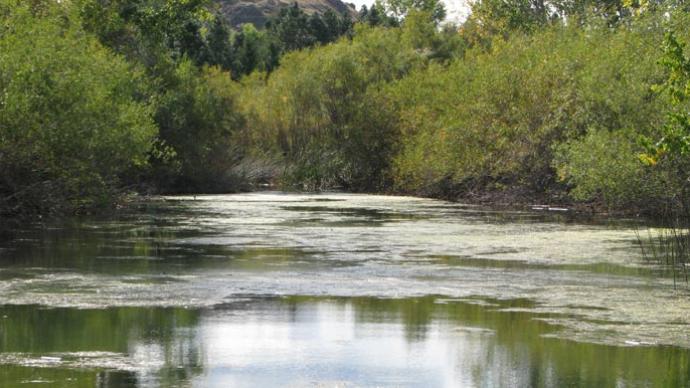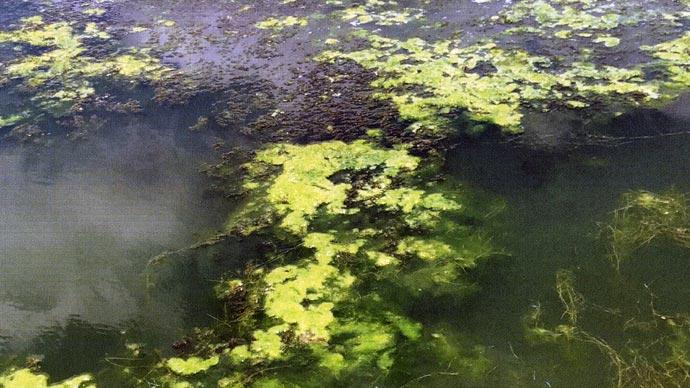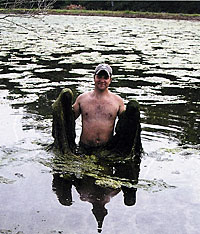
This is the time of year our phone rings off the hook from anxious pondmeisters who are concerned about the aquatic plant growth in their precious ponds. Some are wringing their hands, others have almost given up. Many have already tried to take care of the "problem" themselves by raking, pulling or treating the obnoxious plants with some weird herbicide or witch's brew they heard about from a neighbor's buddy's friend's pal who did it years ago and it worked for them.
If you plan to deal with runaway aquatic plants, you have to know what you are dealing with. Thus the need to understand the ABC's of your underwater produce market.
Face it; most of us are woefully unprepared to cope with too much greenery. We have read and really do understand that some native plants are actually a good thing. But, when does a good thing become a problem? When you think it is. That's when. That's when you pick up the phone and call guys like me.
Never mind the pond's fish population can probably withstand 40-50% coverage of the pond with greenery. Never mind you saw the plants as they emerged earlier this year. It wasn't a big deal two months ago.
It is now.
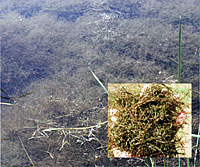
Plants need three things to grow. I call them the "Big 3." Plants need sunlight, food and the "right" temperature. There's not much we can "right" about the temperature. When your water hits the low 50's, algae grows. But, when it reaches the mid-60's cattails shoot up like little green rockets. When water pushes into the 70's algae slows but all the pondweeds grow like crazy.
Can't do much about the food sources, either... unless you wish to pay big dollars to hire an excavator to dig up and haul off the top layers of pond mud.
That leaves us with sunlight. If we can block the sunlight off pond's bottom, we can prevent plants from growing in the deepest water. That's why most ponds end up with a ring of plants. Beyond the ring, sunlight can't penetrate to the bottom.
That's why some pond managers recommend fertilizer in the right situation. It's also why some pros suggest pond dyes strategically in late winter or early spring months.
Oh yes, there's a caveat. Some plants don't need the mud to gain their supper. Coontail is a prime example. That little plant literally sucks the life out of the water, stealing nutrients better suited to plankton. Same with floating plants such as duckweed, watermeal, and hyacinth.
Plants are generally categorized into three different sections, floating, submersed and emerged. Examples of submersed plants are pondweeds, milfoil and filamentous algaes. Emerged plants are cattails, creeping water primrose, lily pads, American lotus, arrowhead and such.
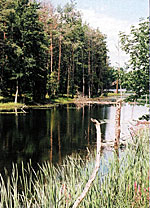
If you wish to deal with runaway plants, you must be able to identify them. If you don't know what they are, send a sample to an expert or spend some time online. Texas A&M has an excellent website for plant identification at https://aquaplant.tamu.edu/.
The last part of today's "ABC's" is to give you a brief idea about ways to deal with or treat runaway aquatic plants.
You basically have three choices. Physical removal. That really means "hard work."
Essentially, physical removal entails dragging the stuff to shore and disposing of it through a variety of tools. There are rakes, cutters and all kinds of home made devices used to literally pull plants out of the water. Oh yes, there's another physical method... drawing the lake down during the dead of winter to allow nature's cold to freeze shoreline plants and hopefully kill them. The second method is biological. Your choices are limited, based on the type of plant you are trying to manage. Microbes may work on algae. Barley straw can work on some types of algae, too. Grass carp, or white amur, might be a choice, depending where you live. Each state has laws directly related to the use of grass carp. Plus, grass carp are not a cure-all for any kinds of plants. They are limited what they can eat. Soft, fleshy lips on the front of their mouth aren't set up to eat coarse plants such as cattails. Nor can they eat filamentous algae simply because they can't bite it. In recent years, tilapia have achieved recognition in their ability to eat and manage algae. And, some states are learning about specific insects that eat certain kinds of plants, but the biological jury is out about that little concept.
That leaves the third method. In today's fast food world, people tend to lean toward a fast "fix"... herbicides. The chemical market blossomed many years ago and people understand there is an herbicide for pretty much every plant on Earth. Don't misunderstand me ... I am not opposed to using EPA approved herbicides which have a short half life and don't disrupt the ecology and biology of any pond. But, before you run down to the local feed store and buy up a shelf of the seller's favorite product, study and understand the consequences.
Each of the three methods of dealing with runaway plants is a temporary fix. It's like mowing the lawn. While there are products which can and will eliminate certain species of plants, don't forget the "Big 3". Whenever the right temperature, food and sunlight all come together, something will grow.
The only "permanent" fix is to eliminate one of the "Big 3".
Reprinted with permission from Pond Boss Magazine


